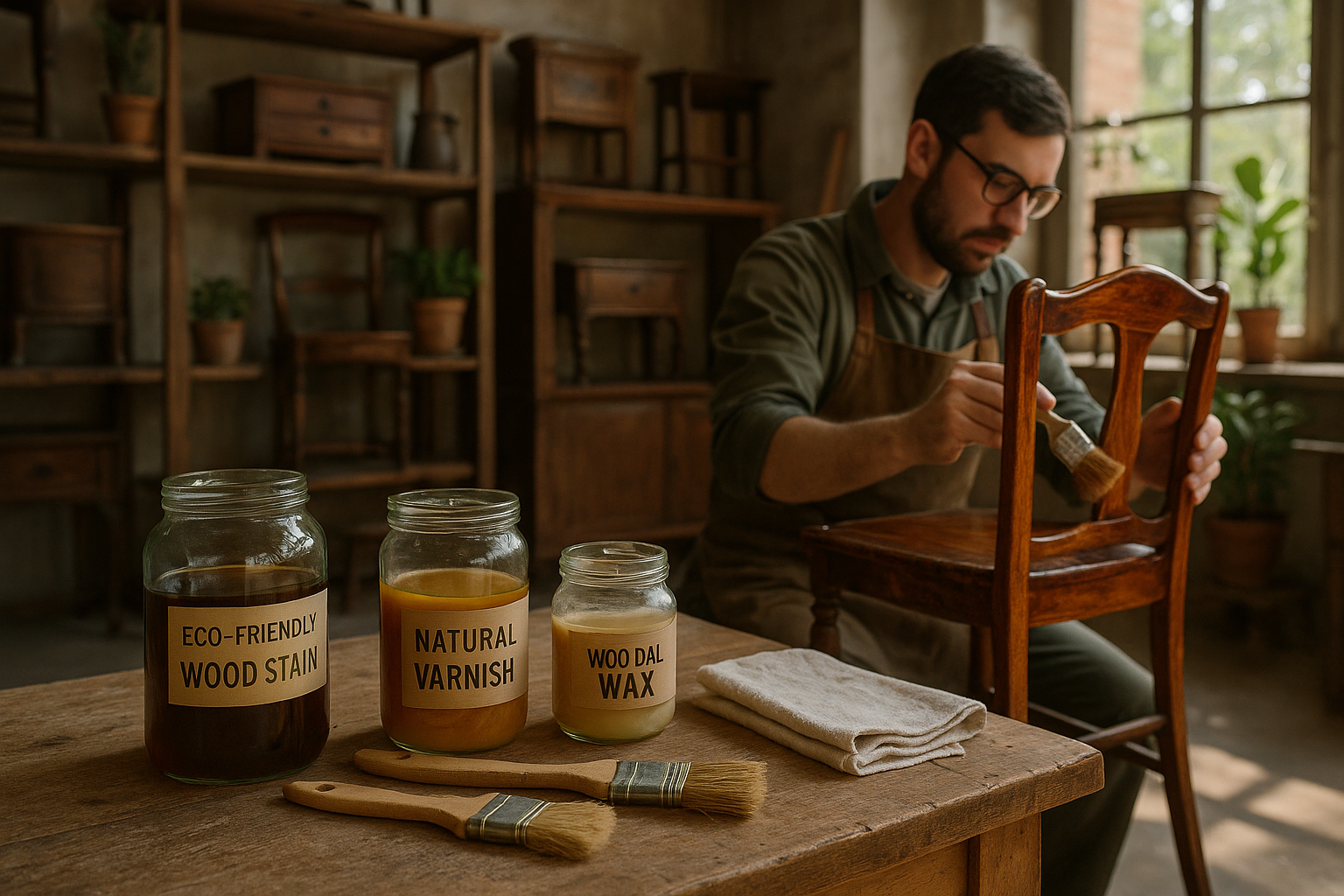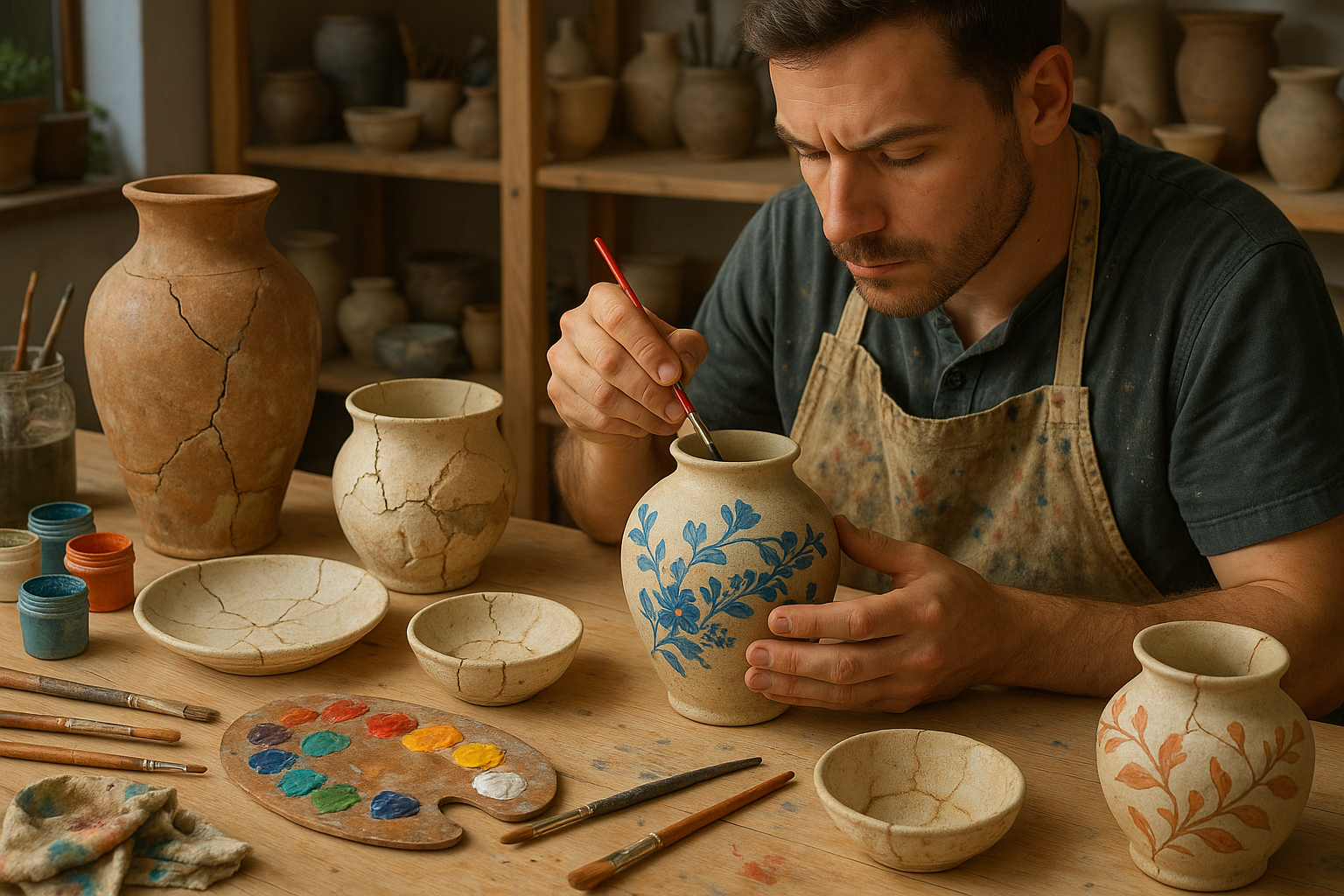In a world that seems to be racing towards the new and the now, there is a unique charm in the old and the timeless. Antique furniture holds within its wooden grains stories of the past, whispers of eras long gone, and a character that modern pieces often lack. Yet, as much as these pieces tell tales of yesteryears, the wear and tear of time cannot be ignored. This is where the art of furniture restoration comes into play, breathing new life into old wood, allowing these historical artifacts to thrive once more.
But restoration in the 21st century brings with it a new set of responsibilities. 🌱 As we become increasingly aware of our environmental footprint, the need for sustainable solutions is more pressing than ever. The challenge lies in merging traditional restoration techniques with eco-friendly practices that respect our planet and ensure the longevity of our cherished antiques. This balance is not only crucial for preserving our heritage but also for fostering a more sustainable future.
In this comprehensive guide, we delve into the fascinating world of restoring antique furniture with eco-friendly finishes. We’ll explore a variety of sustainable solutions that can transform old pieces into dazzling focal points in your home, all while keeping our environmental impact in check. From the selection of materials to the application of finishes, every step of the process will be examined through the lens of sustainability and innovation.
To begin, we’ll discuss the importance of choosing the right materials. Whether it’s opting for non-toxic paints, natural varnishes, or recycled materials, the choices we make at the start of a restoration project lay the foundation for a sustainable outcome. We will highlight the benefits of these eco-friendly materials, not only for the environment but also for the health of those who live with these restored pieces.
Next, we’ll dive into the world of techniques. How can we ensure that our methods of sanding, stripping, and finishing are as gentle on the planet as they are effective in restoring the beauty of the furniture? Techniques such as upcycling and using low-VOC (Volatile Organic Compounds) products will be explored, providing you with a toolkit of methods to approach restoration in an eco-conscious way.
Moreover, we will look into the role of innovation in sustainable restoration. From cutting-edge technology that allows for more precise repairs to the use of renewable energy in workshops, the intersection of tradition and technology is a fertile ground for eco-friendly advancements in furniture restoration. ⚡ By embracing these innovations, restorers can achieve exceptional results while minimizing their environmental footprint.
But the journey doesn’t end with the restoration process itself. Maintaining the beauty and integrity of restored furniture also requires sustainable care practices. We’ll provide tips on how to care for your antiques using natural cleaning products and methods that prolong the life of the finishes, ensuring that the restoration work remains pristine for years to come.
Finally, we’ll touch upon the broader impact of choosing sustainability in restoration. By opting for eco-friendly finishes and techniques, you are contributing to a larger movement towards environmental responsibility and conservation of resources. This conscious choice not only benefits the planet but also adds a deeper layer of value to the restored pieces, transforming them into symbols of sustainable living. 🌍
Whether you are a seasoned restorer or a passionate beginner, this guide aims to inspire and equip you with the knowledge to restore with purpose. As you embark on the journey of reviving antiques, remember that each choice you make has the potential to contribute to a more sustainable world. The stories told by these pieces of furniture are far from over; with the right approach, they can continue to narrate the beauty and importance of preserving our planet for generations to come.

Conclusion
In conclusion, the journey to restore antique furniture using sustainable solutions and eco-friendly finishes is not just an endeavor to preserve our cherished pieces but also a commitment to a healthier planet 🌍. Throughout this article, we explored the intricate balance between maintaining the authenticity of antique furniture and adopting modern, environmentally responsible techniques.
We began by understanding the environmental impact of traditional restoration methods, which often involve harsh chemicals and unsustainable materials. Shifting towards eco-friendly finishes allows us to reduce this footprint significantly. These green alternatives, ranging from natural oils to water-based varnishes, not only preserve the integrity of the furniture but also contribute to a safer home environment by minimizing toxic emissions.
Moreover, we highlighted the importance of sourcing sustainable materials. Using reclaimed wood and eco-certified products not only gives a new lease of life to antique furniture but also supports sustainable forestry practices. This approach is crucial in combating deforestation and promoting biodiversity.
The techniques discussed, such as gentle sanding and the use of non-toxic adhesives, demonstrate that sustainable restoration is both a science and an art. They ensure that the furniture’s historical value is preserved while adapting it to contemporary ecological standards.
Throughout this exploration, the role of skilled artisans was emphasized. These craftsmen and women are not only the custodians of traditional methods but also the innovators of sustainable practices. Their expertise ensures that each piece of furniture is treated with the respect and care it deserves, prolonging its life and story.
The broader implications of adopting sustainable restoration practices extend beyond furniture. They inspire a cultural shift towards valuing sustainability in all aspects of life, encouraging us to rethink how we consume and interact with our environment. This philosophy of conservation over consumption is essential in fostering a sustainable future for generations to come.
We invite you to reflect on how these practices can be applied not just in restoration but in other areas of your life. By choosing sustainable options, you contribute to a larger movement aimed at preserving the beauty and history of our world while nurturing the environment.
Thank you for joining us on this insightful journey. We encourage you to share your thoughts in the comments below and spread the word by sharing this article. Together, we can make a difference, one piece of furniture at a time 🪑.
For further reading, you may explore resources from Eco-Friendly Habits and Green Building Advisor to deepen your understanding of sustainable living practices.
—
Feel free to expand on this outline to reach your desired length, incorporating more detailed analysis or additional sources as needed.




